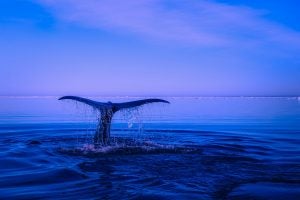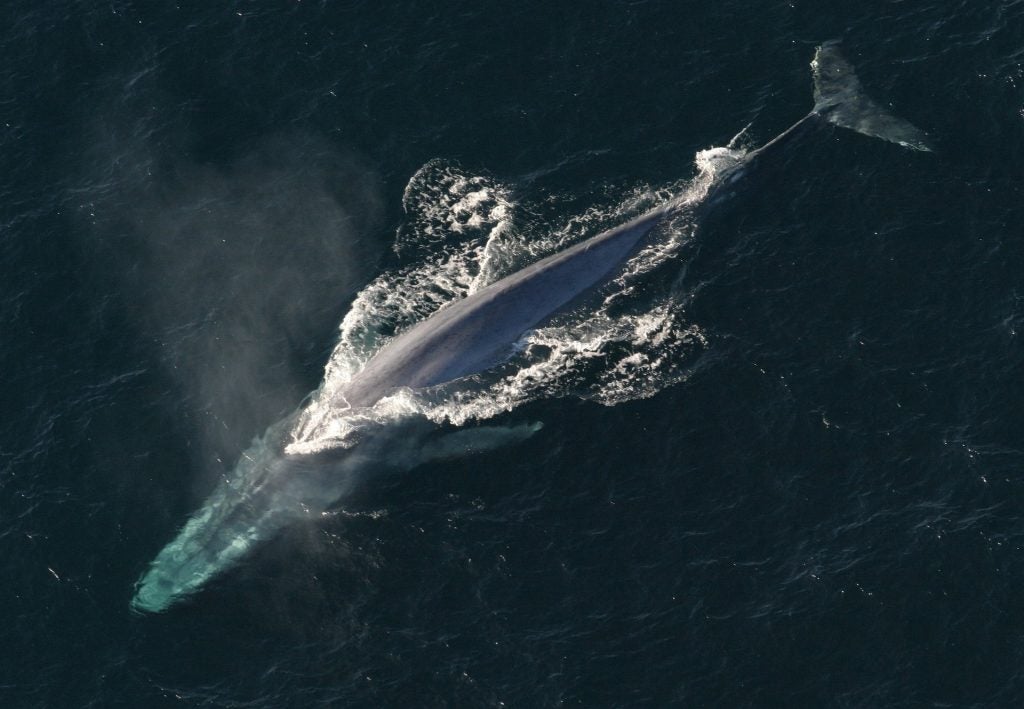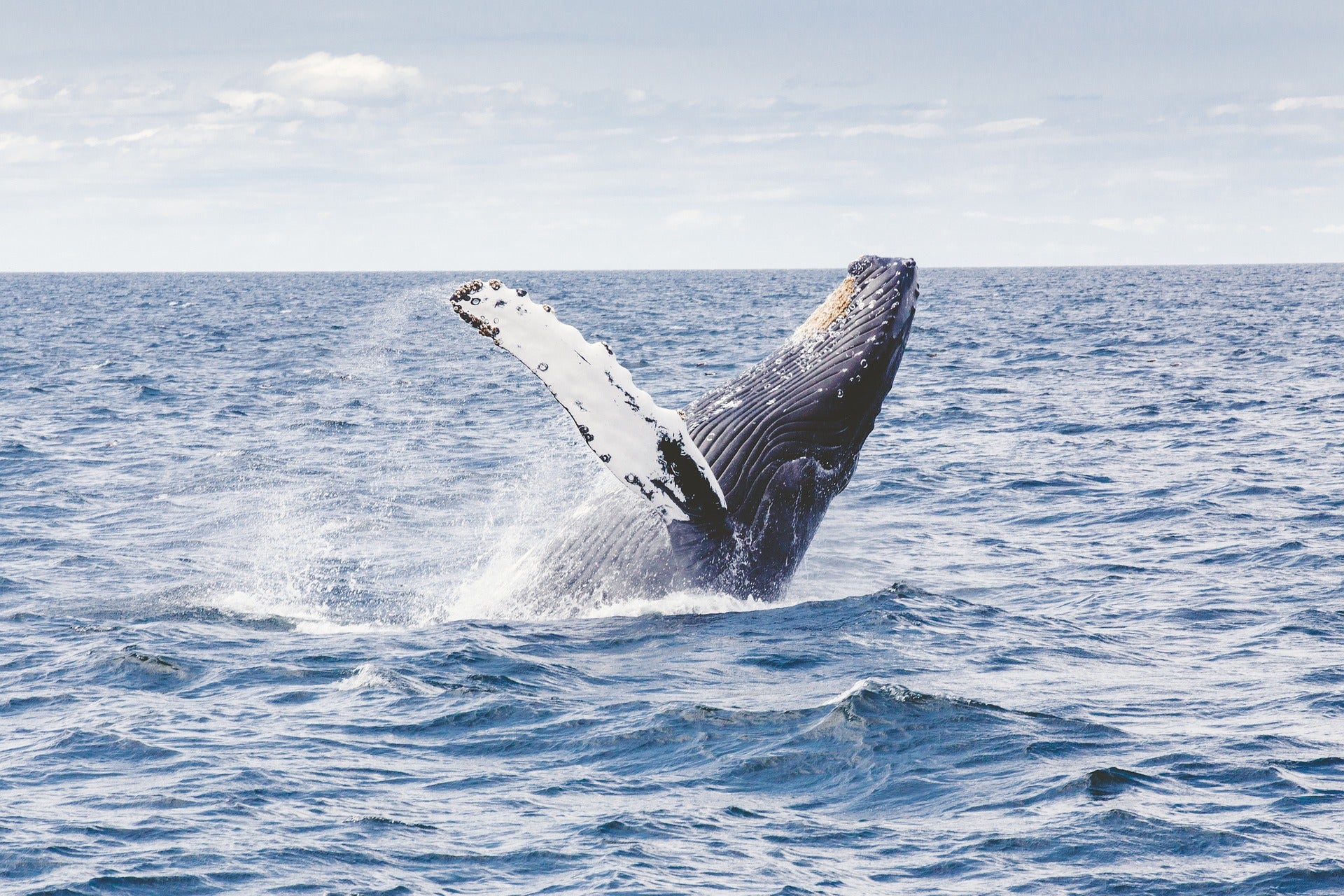In all the years I’ve been studying the ocean, whales have provided some of my fondest memories. I remember those humpbacks singing to each other off Maui; the baby gray whale I saw rolling around in the surf near Bodega Bay; and the blue whales that left me awestruck during trips to the Channel Islands.
Lately, I’ve been studying natural ocean processes that remove carbon dioxide from the atmosphere, searching for ways to restore or accelerate them so that we can safely slow down the rate of global warming. Whales might be part of the solution.
Mangroves, salt marshes and seagrass meadows are well-known carbon sponges that live in nearshore waters. They are probably capable of sequestering carbon for decades or even centuries under the right conditions. Phytoplankton out in the open ocean also absorb carbon and fuel complex food webs that include zooplankton, small fish, bigger fish, all kinds of invertebrates, seabirds, marine mammals and more.
In all the years I’ve been studying the ocean, whales have provided some of my fondest memories.
There are of course a lot of questions to study. Where does the carbon go once it is absorbed by mangrove trees, salt marsh grasses or phytoplankton? How much of it is eaten, only to pop back into the atmosphere as animals respire? How much of it sinks into deeper waters that stay at depth for centuries? There are also a lot of questions about which natural processes should be restored or accelerated in order to draw more carbon dioxide out of the atmosphere and lock it away — safely.
Fishing can reduce the average size of fish in a population, and some fisheries focus on catching the big ones. Reducing fishing pressure can thus increase the average size of fish under some conditions. Small fish get eaten at high rates, so a lot of the carbon they have absorbed during their lifetimes may stay in surface waters or even return to the atmosphere if carbon concentrations in those waters become too high or if saturation rates are reduced due to warming. Large fish may get eaten less frequently and when they die, perhaps they sink to deeper waters where the carbon that is released as they decompose stays put. Large fish also make large feces, which could perhaps transport carbon to deeper waters more effectively than the small feces of smaller fish. So maybe if we increase the average size of fish, and leave more large fish in the water, more carbon would get stored in the deep ocean.
Now, let’s take this idea to the extreme. Whales are really big, and make really big feces. So maybe restoring whale populations could also increase the amount of carbon that gets down into deep water and is stored. There are a lot of uncertainties around both of these pathways: big fish and whales. But what we do know is that whales help to regulate a huge variety of marine populations, from krill to fish and everything in between because of their voracious appetites, ingenious feeding strategies, and ability to filter feed. The regulation that big fish and whales provide helps keep marine ecosystems healthy, balanced and resilient.
I’ve written a lot about how to improve fishery performance and reduce fishing pressure, which could help bring big fish back. But what about whales? Since we know whales are integral to the health of our oceans — even potentially helping sequester significant amounts of carbon in the sea floor — it follows then that we should do everything we can to avoid killing them accidentally.
Unfortunately, a lot of whales are still dying preventable deaths. An endangered fin whale washed up on a beach near my hometown of Oakland recently, which appears to have been hit by a ship. On the U.S. West Coast, ship-strike deaths — which are often caused by large commercial vessels — are the number one source of human-caused mortality for blue whales, and the second highest for humpback whales. There have been 49 recorded incidents of fatal ship strikes on endangered whales in California from 2007-2020, with an average of 3.5 per year, and those are just the whale deaths that we happen to see. Far more probably die at sea and sink before anyone notices them.
Unfortunately, a lot of whales are still dying preventable deaths.
Models estimate that 83 endangered blue, fin and humpback whales are killed along the U.S. West Coast between May and September of each year, suggesting that total annual ship strike mortality may exceed annual limits for combined sources of human-caused mortality of these federally protected species. On the U.S. East Coast, one study suggests that about a quarter of all whale deaths may be attributed to ship strikes.
The good news is that there are effective ways to reduce whale deaths from ship strikes that don’t cost much. For over a decade, the National Oceanic and Atmospheric Administration, or NOAA, has worked to redefine shipping lanes off both coasts to separate ships and whales, whenever possible. They have also requested that the operators of large vessels slow down to 10 knots or less when endangered whales are likely to be around. This has been quite successful on the U.S. East Coast, where these limits are federally regulated and enforced.
 Here on the West Coast, NOAA asks large ships to comply with voluntary Vessel Speed Reduction (or VSR) requests, which go into effect roughly May through November while endangered blue, fin and humpback whales are feeding in the region. While cooperation levels with these voluntary speed requests was low in the past (<50%), cooperation is increasing in recent years, along with attention to this issue.
Here on the West Coast, NOAA asks large ships to comply with voluntary Vessel Speed Reduction (or VSR) requests, which go into effect roughly May through November while endangered blue, fin and humpback whales are feeding in the region. While cooperation levels with these voluntary speed requests was low in the past (<50%), cooperation is increasing in recent years, along with attention to this issue.
In the San Francisco Bay Area, large vessel cooperation levels with these requests increased from 45% in 2018 to 64% in 2020. In southern California, cooperation increased from 23% to 54% over the same time period. While this increase in cooperation is promising (and offers added benefits of reduced air pollution, greenhouse gas emissions, and underwater noise in the regions where they have been implemented), researchers are noting that voluntary cooperation levels by industry are not where they need to be to protect these endangered whale populations.
In 2019, 15 global container and car carrier lines signed up and participated in the VSR program, according to a recent report. In that year alone, the program saved 536 tons of smog-forming nitrogen oxides and more than 17,000 metric tons of regional greenhouse gases — the equivalent of taking 38,000 cars off the road for a year. And they no doubt saved a lot of whales, who are now roaming the seas, eating, pooping and possibly sequestering carbon.
Getting on board with these Vessel Speed Reduction requests seems like a high leverage way to help endangered great whale populations recover to levels that could potentially matter for reducing the rate of global warming — but certainly for enhancing the health of the oceans, as well as the wonder and awe that they inspire.











